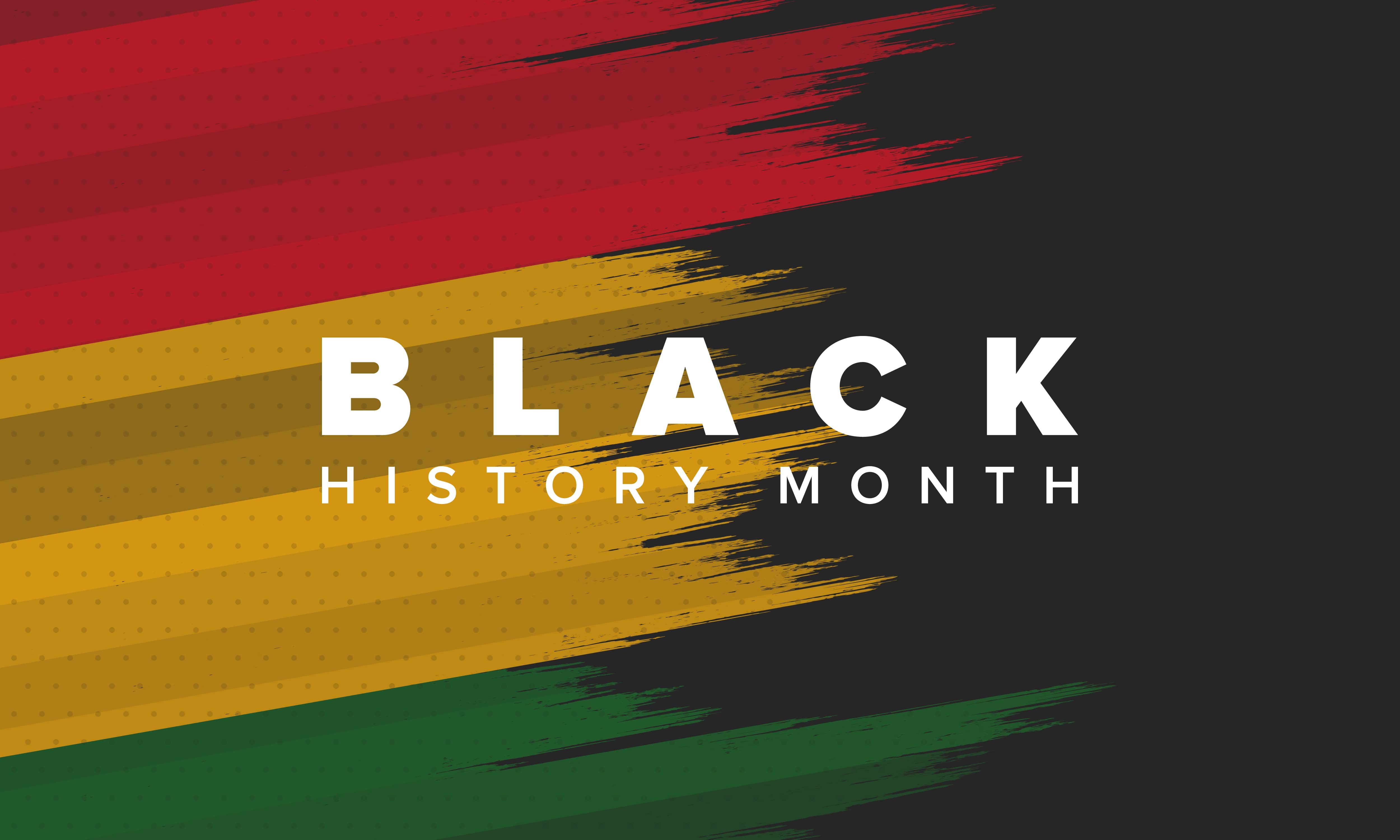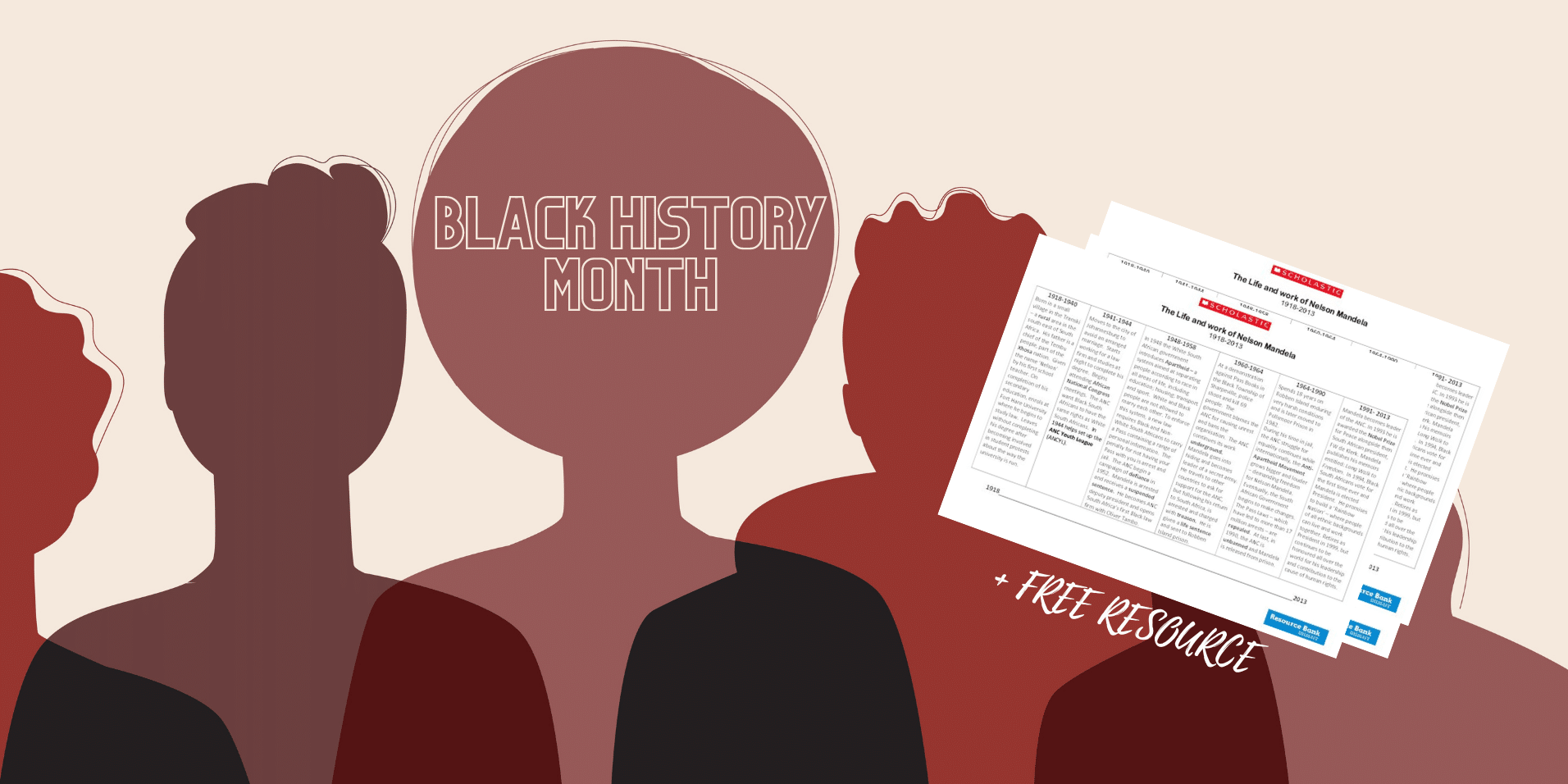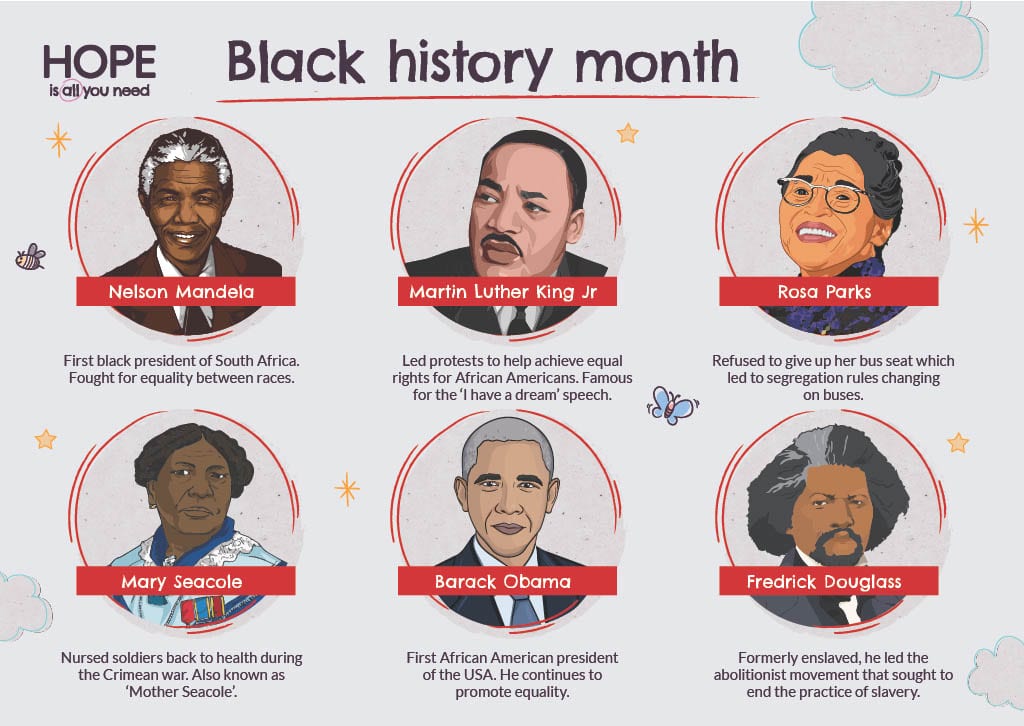Black History Month Timeline – Free Download *Updated*
We have compiled a Black History Month timeline including a free download to inspire your class.
Educating and inspiring your pupils on Black British History is essential as it would be impossible to tell Britain’s entire history without including Black people’s stories. We believe that children from all backgrounds should learn about different races history and not the predominately white history that has been taught for generations all year round.
In doing this, you can make your pupils feel included, as well as educate them on all the important figures and events that have shaped how we live today.
Teaching Black history can be tricky as it’s not talked about enough, so we have put together a general timeline of key events and influential Black people to inspire your lesson plans.
Black British History Timeline
Black History Month
43 ADS
This was the first known record of African ancestry in Britain’s history. It showed Black people have lived and worked in Britain since Roman times.
40 AD
A Black woman’s skeleton was found in 1901. She was buried with possessions that showed she was wealthy such as ivory: bracelets, beads, earrings, and a pendant. The name Ivory Bangle Lady was coined for her due to this.
1511
King Henry VIII had a Black trumpeter, John Blanked, to play at a tournament to celebrate the birth of his son.
1660
The Royal Africa Company was founded which sent thousands of enslaved people to the Americans.
1831
Mary Prince, who was a British abolitionist and an escaped slave, was the first Black woman to publish her journey in the UK. Detailing the events she came across and the challenges of being a Black woman to help educate and raise awareness of the indecency towards Black people.
1834
Slavery becomes abolished throughout the British Empire.
Did you know?
Black people have been in Britain since Roman times.
1931
The League of Coloured Peoples is formed by Dr Harold Moody. He was born in Jamaica and lived in London working as a physician. He had been refused work because of his race. He campaigned a lot about the discrimination against Black people and worked hard to create this league to raise awareness to the issue.
1958
The anti-imperialist, anti-racist newspaper West Indian Gazette was founded by Claudia Jones, who is one of the most influential figures in the UK Black Women’s Movement.
1959-66
Claudia Jones and other influential Black people created and developed the Notting Hill Carnival. This was at a time where racial tensions were very high due to the violence and hostility against Black people.
1963
Paul Stephenson and the West Indian Development Council lead a four-month boycott of Bristol Omnibus. This came after the bus company refused to employ Black or Asian people discriminating people of colour.
1973
Beverley Bryan, Olive Morris and Liz Obi lead the Brixton Black Women’s Group to raise awareness of the issues that Black women face. They lead many campaigns and protests for this.
Did you know?
During the First World War, many men from the Caribbean came to Britain to fight.
1981
Riots occur across the UK as a result of rising racial tension. One of the main factors that played into this occurring was the police routinely stopping Black people to search them for no valid reason.
1983
Sam King becomes the first Black mayor in the London borough of Southwark.
1987
The first Black woman was elected as a British MP. Diane Abbott was elected into the Labour party for Hackney North and Stoke Newington.
2005
Dr John Sentamu became the first Black archbishop.
2020
Protests spread worldwide, including the UK, as part of the Black Lives Matter Movement. This occurred after the death of George Floyd in a bid to end anti-Black racism. The discrimination against Black people, especially within the police, has always been an issue for many years but this act pushed a lot of Black people over the edge to ensure that things change. The protests were a call to action for change not only within the police but for everyone to consider Black lives and listen to their stories.
New Free Download
Download our new free poster to inspire your class. Why not showcase the poster in the classroom to teach your class more about influential figures from Black history.
Black history month can and should be celebrated all year round. There are many more key people and commemoration days to add into a timeline and teach children about. It provides an opportunity for all young people, regardless of background, to learn about Black history.
Free Download
Nelson Mandela is considered across the world as one of history’s most inspirational figures. He was a social rights activist, politician and philanthropist who became South Africa’s first Black president from 1994 to 1999. Below is a free timeline that features the life and work of Nelson Mandela.
“No one is born hating another person because of the colour of his skin, or his background, or his religion.
People must learn to hate, and if they can learn to hate, they can be taught to love, for love comes more naturally to the human heart than its opposite.” – Nelson Mandela
Resource courtesy of the Scholastic Resource Bank.
More information
Check out a range of resources from BBC Teach
Read the Story of Windrush on the English Heritage website



